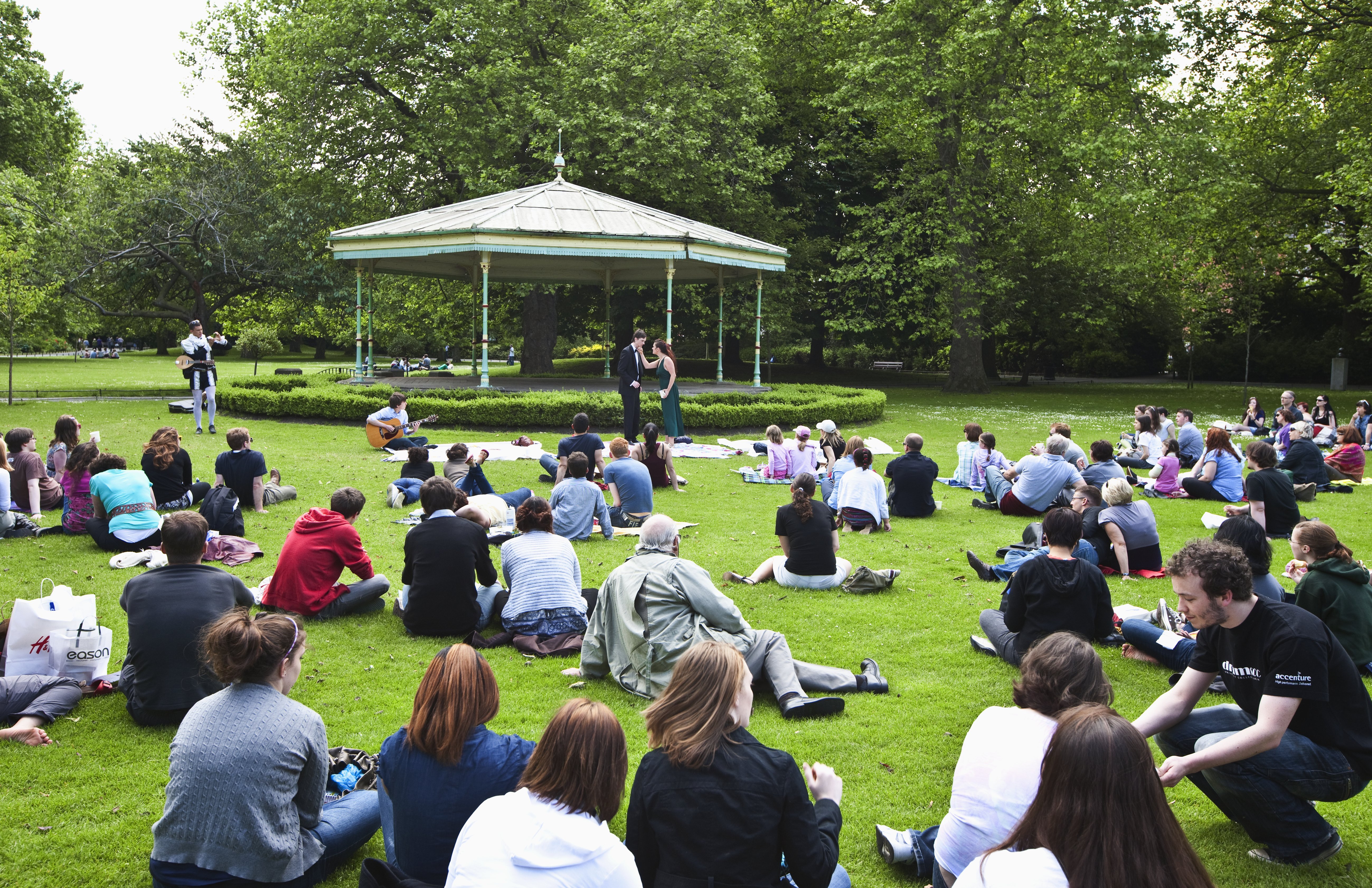
If you were to plan a weekend in Dublin, you’d imagine a city break. Maybe gazing at the archaeological treasures of the National Museum of Ireland, taking a stroll around the Trinity College campus, having a drink and taking in the top-floor view at the Guinness Storehouse (guinness-storehouse.com) or listening to music in a Temple Bar pub. All great Dublin experiences.
But also worth including on your itinerary are the city’s green spaces: St Stephen’s Green, the most popular; Merrion Square, an elegant public garden; Herbert Park, full of locals enjoying outdoor sports; and Phoenix Park, the largest city park in Europe.
And there’s much more greenery of the less manicured variety on Dublin’s southern doorstep in County Wicklow, a wild land combining coastal splendour with a mountainous interior studded with chilly lakes, glacial valleys and the remains of an early monastic site. For a taste of this Garden of Ireland, set off on the Wicklow Way hiking trail (wicklowway.com) from Rathfarnham on Dublin’s outskirts and see how far you get.
Hike in Glendalough
 Wicklow Mountains National Park is a great place to hike.
Wicklow Mountains National Park is a great place to hike.

In the heart of the Wicklow Mountains National Park, Glendalough (the valley of two lakes) is considered one of Ireland’s most beautiful spots, thanks to its wild and romantic landscapes. It’s also a great place to hike and to view the impressive ruins of an ancient monastic site and its famous round tower. The valley is crisscrossed by nine trails, the longest of which is about 10km long. Set off from the national park information centre (nationalparks.ie/wicklow) near the upper lake carpark. A bus service (St Kevins bus; glendaloughbus.com) links Dublin to Glendalough twice a day in just under one hour, 30 minutes.
Be intoxicated by Powerscourt Gardens
The eminent 19th century horticulturist Daniel Robinson, creator of the splendid Powerscourt Gardens, was allegedly sometimes too drunk to stand in the exceptional gardens he designed. You too will be intoxicated by the terraces, statues, water features and grottoes of the vast green spaces Robinson created, where over 200 varieties of trees and plants grow.

Saunter through a coastal garden just outside Bray, a popular seaside resort with a long promenade along the beach: Killruddery House & Gardens (killruddery.com) is a mix of historic manor house (guided tour compulsory) and one of Ireland’s oldest gardens, where an impressive collection of statues and plants flourishes.
From Dublin, Bray is just 20km south and can be reached by bus in less than 45 minutes.
Admire Dublin from Howth Summit
The pretty port of Howth sits on a green peninsula 15km northeast of the Irish capital (30 minutes by train). The hill overlooking the town provides spectacular views of Dublin Bay back to the city. Howth also has a castle with grounds that contain a dolmen (ancient tomb) and medieval ruins.

Buy local at Avoca Handweavers
It was in the tiny village of Avoca, located in a wooded valley in County Wicklow, that Avoca Handweavers (avoca.com), Ireland’s most famous traditional clothing manufacturer, was born. To stock up on knitwear and elegant handmade souvenirs, there are two branches: 11-13 Suffolk Street, in central Dublin; or Kilmacanogue, 5km (3 miles) southeast of Enniskerry, at the company’s headquarters, which occupies a 19th century arboretum.
More time?
Mt Usher Gardens: A green paradise on the edge of Ashford, 50km south of Dublin.
Kilmacurragh Botanic Gardens: Ornamental gardens set around an 18th century manor house, 65km south of Dublin.
Kilmainham Gaol: In Dublin, this former prison houses a remarkable museum retracing the painful process that led to Irish independence.
Great Sugar Loaf: The Great Sugar Loaf is County Wicklow’s iconic peak (501m), a conical shape looming over the village of Kilmacanogue, 35km south of Dublin.
The round system
It’s my round! The getting-a-round-in system of paying for a drink with the person/people who bought you one is the foundation of Irish pub culture, summed up very simply by the Irish saying: "It’s impossible for two men to go to the pub for just one drink." Make sure you follow this sacred rule. And why not comply with a pint of famous Guinness, the black stout developed in 1759 by Arthur Guinness, which is said to take its flavour from the water of the Wicklow Mountains.
Practicalities
How to get there & around
Dublin Airport has flights to destinations across Europe and the rest of the world. Once in the city, in addition to buses and trams for getting around, the Dublin Area Rapid Transport (Dart) provides a fast train service to the coast, as far as Howth. Enniskerry, a good base for visiting Powescourt and Glendalough, is 45 minutes by Dart, then 30 minutes by bus 185.

County Wicklow is a popular weekend destination for Dubliners, so book early. You'll find everything from hostels and backpacker campsites to farmhouses converted into B&Bs and manor houses transformed into luxury hotels. Among these, the Powerscourt Hotel & Spa (powerscourthotel.com) is a huge, luxury option right on the Powerscourt Estate.
Events
In September, the weather can be surprisingly mild, making it a good time for hiking and enjoying the Dublin Fringe Festival (fringefest.com), with over 100 shows being held in the streets and bars of the capital.
The book
100 Weekends in Europe by Lonely Planet, $55 RRP.
Available at Whitcoulls or contact shop.lonelyplanet.com











